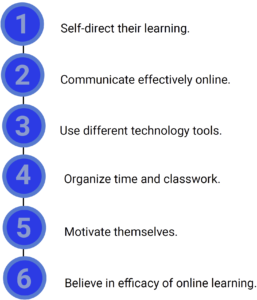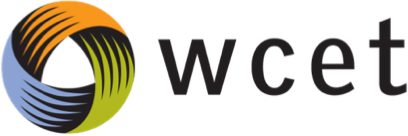The high-profile, racially charged killings in 2020 of Ahmaud Arbery, Breonna Taylor, and George Floyd, Jr. created a new urgency to combat deeply ingrained, institutionalized racism, including in higher education. The movement to create research-backed, institutional change in post-secondary education to address racism and inequity and elevate equitable educational opportunities for traditionally minoritized students is likewise gathering momentum.
It is in this spirit that The National Research Center for Distance Education and Technological Advancements (DETA) and WCET – The WICHE Cooperative for Educational Technologies undertook a review of research that potentially shows if digital learning technologies produce positive outcomes for specific populations.
The authors of the resulting joint report, Research Review: Educational Technologies and Their Impact on Student Success for Certain Racial and Ethnic Groups, were looking for disaggregated data on students who identified racially or ethnically with traditionally underrepresented groups such as Black, Latino, or Indigenous — what the report calls the population of interest.
The data wasn’t easy to find. Though there are decades of research showing when digital learning produces benefits for “all students,” in the end the research review identified only 17 high-quality studies that provided disaggregated data on these particular groups.
According to one of the review’s authors, Dr. Tanya Joosten, Senior Scientist and Director of Digital Learning Research and Development at the University of Wisconsin-Milwaukee and DETA, it’s critical to consider the limitations of the existing body of research as a jumping-off point.
“I feel like we don’t really have a clue when it comes to our students of color regarding educational technology or digital learning in general,” she says. “Because of the way the system of research is set up, the majority of our efforts are looking at all students and don’t particularly look at students of color.”
Another limitation is that many studies conflate tools with how they are used. For example, there is an abundance of studies on open education resources studies, but OER in and of itself isn’t an intervention. The authors of the study took care to discern between an element of a solution (e.g. OER, adaptive learning, etc.) and actual interventions and practices.
While Joosten admits it’s disappointing to find so few studies that showed “something that positively impacted students of color and showed promise to improve student outcomes,” the good news is that even that limited number suggest several actions that college and university administrators, faculty, support staff, and learners themselves can employ to reduce barriers, create new opportunities, and empower student success.
Findings from the research
The review’s authors identified several areas of opportunity afforded by educational technology to support student engagement and success for the population of interest.
1. Culturally inclusive curriculum
Students desire opportunities to express their identity through their lived experiences. Culturally inclusive assignments and texts, starting with introduction modules that make space for students to tell a story about themselves or their culture, can be a great starting point.
Further, as the study’s authors note, “Curriculum, whether or not specific to mediated learning, can be reviewed across campuses to assure that it is culturally inclusive.”
Related reading: Curricula That Account for All Students: A Look at Culturally Responsive Teaching in Higher Ed
2. Course modality
Under certain circumstances, students are more likely to succeed in blended classes than in face to face. Students generally have more success in both blended and online modalities in upper-level online courses related to their degree program than in lower-level or elective online classes. For students in introductory or elective courses, while blended courses can lead to positive outcomes, the case for online-only courses is less clear.
One study in the review looked at STEM courses in particular at an urban community college, and showed that “blended lower-level courses with higher structure in STEM-related disciplines can lead to greater student outcomes,” says Joosten. “I was really happy to see that research-backed evidence.”
Related reading: What Are Gateway Courses and Why Do They Matter to Equity in Higher Ed?
3. Instructional characteristics and design
The course modality or delivery mode wraps around what the report calls the “black box” — the complexity of the instruction, learning, or design that influence how effective a particular learning technology will be.
“We have decades of research and meta-analyses telling us that online does no harm, that it’s just as good as face to face,” Joosten says. “But what’s in the black box? How are you delivering your content? How do you interact with your students? How are they interacting with each other? How are you assessing them? That’s what matters.”
Studies in the review showed that non-prejudicial, collaborative online courses can foster supportive, encouraging environments that minimize competition and empower students with the ability to go at their own pace.
Additionally, students require interactions with their instructors and peers for improved outcomes. That includes clarifying expectations and providing clear instructions and examples, along with meaningful, timely feedback to correspondence and assessments.
Related reading: Reflect and Check: 3 Ways to Center Equity in Course Design
4. Student-level characteristics
Among the interventions that improved outcomes are those that prepare students for online learning, including courses in educational technologies, summer classes to prepare for adaptive learning, and improved access to technology.
One study in the review showed the degree to which familiarity and previous success with learning technology influence future success. The takeaway from that, says Joosten, is to find ways to support students in accessing and utilizing digital solutions for better educational experiences.
When students are struggling, she says, “often administrators think students need to be on campus and building learning communities. Sometimes that’s just not feasible. If you have a family at home you’re caring for, whether it’s children or older family members, or if you have job responsibilities, then being on campus-prescribed dates and times is not necessarily helpful. So we need to be careful of leading students of color away from technology because of issues of access.”
Related reading: Value, Efficiency and Autonomy: What Students Want from Adaptive Courseware
Recommendations for creating a more equitable learning experience
Ultimately, the goal of the DETA and WCET report is to identify research-based practices so educators can begin to use learning technologies in the service of more equitable learning environments for Black, Latino, Indigenous, Pacific-Islander, and poverty-affected students. Below is a sample of the report’s recommendations.
For administrators and staff
One key recommendation was to provide opportunities to create online learning readiness that builds study skills and self-efficacy.

Image credit: From Research Review: Educational Technologies and Their Impact on Student Success for Certain Racial and Ethnic Groups by The National Research Center for Distance Education and Technological Advancements (DETA) and WCET – the WICHE Cooperative for Educational Technologies
To achieve that, the authors don’t necessarily recommend launching more student support services. Joosten says instead to consider re-envisioning the existing structure, focusing on retention strategies, removing barriers to learning, and creating an overall supportive environment for distance education.
Faculty and instructors
Likewise, faculty should work to ensure students have the skills and resources necessary to use and access technology. That includes assessing digital proficiency (i.e., communication, productivity, and collaboration tools) and online learning readiness.
Faculty should also utilize more structure for their hybrid or blended courses and strategically design and organize courses to objectives, assessments, and activities.
Students
Students should resist the myth that online courses are necessarily easier. They should choose online or hybrid courses selectively while taking advantage of the support services their college or university provides, including access to technology, preparatory courses that support learning to learn.
Equity in research
The authors of the report include many other specific recommendations, along with a call for more research into the factors that influence success for minoritized students.
While more funding for that research is important, Joosten says other structural barriers are a more immediate influence, including government funding sources not requiring data disaggregated by sub groups and journals not being interested in publishing it.
“That’s really disappointing that we don’t have more flexibility to include — and not just include, but almost require — data that shows this intervention works for students of interest,” Joosten says.
“A lot of times we say more funding is needed, but there are other things people could do right now. Journals and the government could be saying you have to show evidence that your intervention doesn’t just work for all students — that it works for students of color and other minoritized groups.”
To see the complete findings and additional recommendations, download Research Review: Educational Technologies and Their Impact on Student Success for Certain Racial and Ethnic Groups from DETA and WCET.




